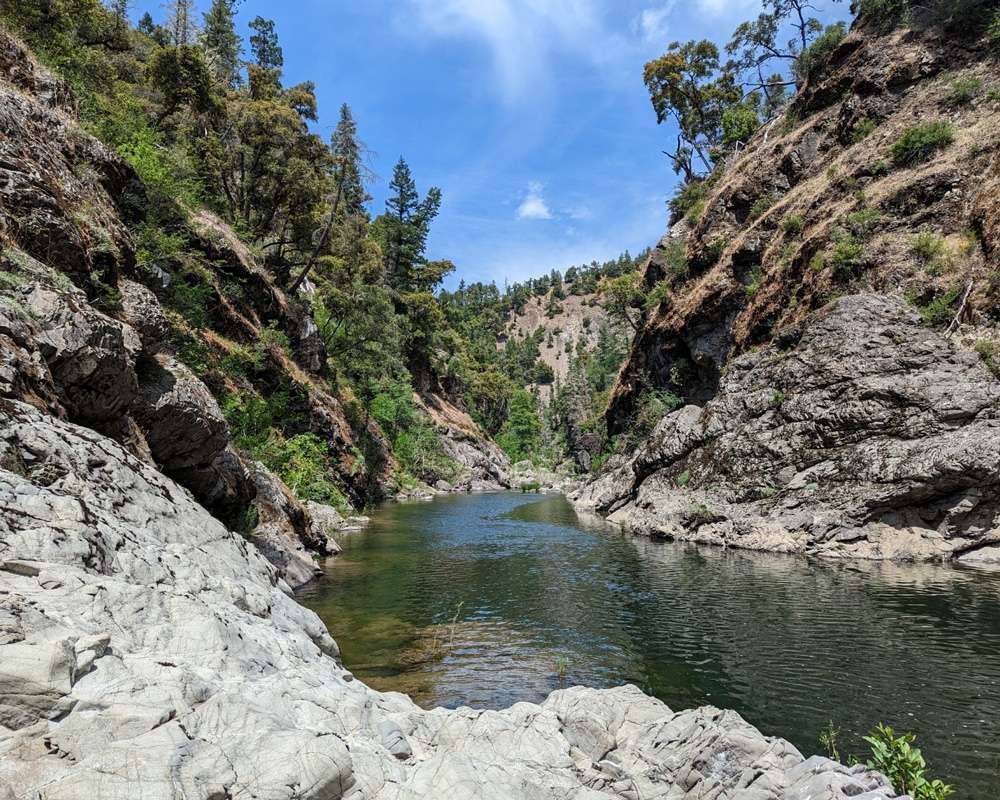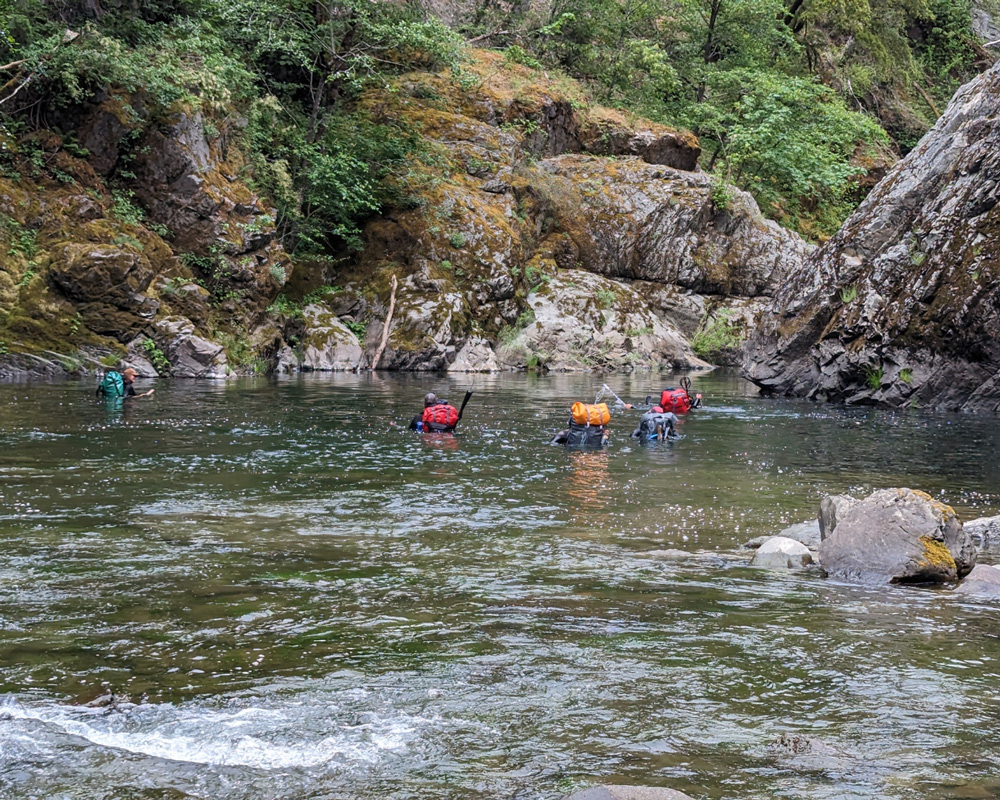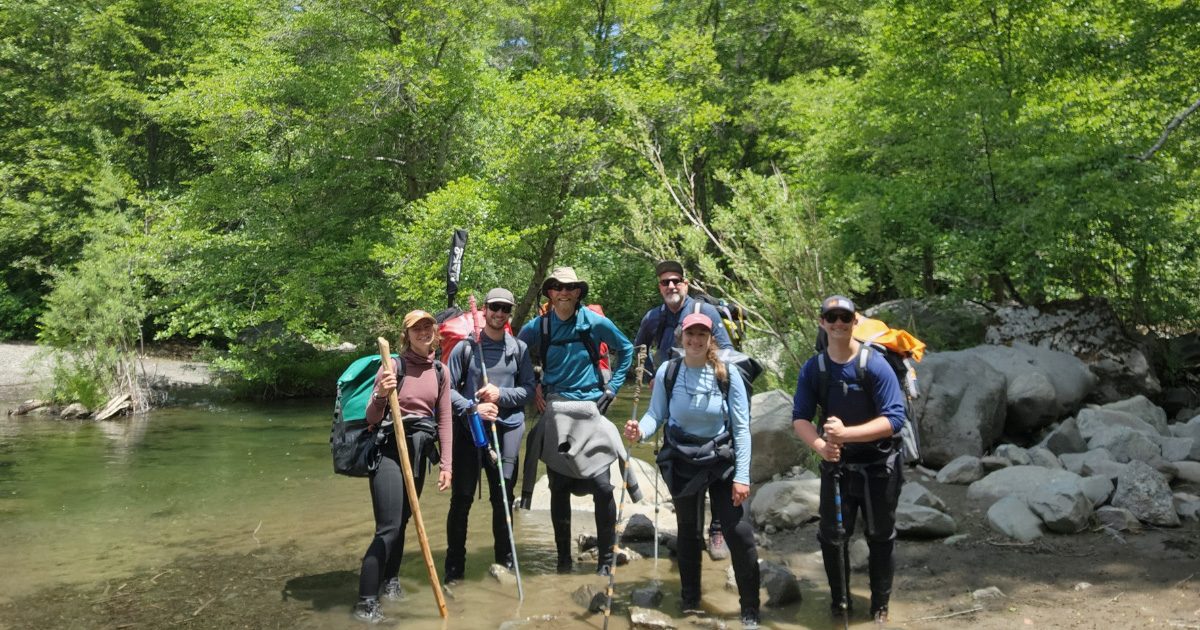
Written by Darren Mierau, CalTrout North Coast Regional Director
Wilderness in our Backyards
It’s always encouraging to find pristine and well-protected rivers and streams that retain their highest-quality fish and wildlife habitats and with long-term protections already in place in perpetuity. Last week, as part of our North Coast Science & Monitoring Program, a field crew of six fisheries scientists explored such a location on the South Fork Eel River.
Amongst a patch-work of ownership in the upper headwaters of the South Fork Eel River are the UC Berkeley Angelo Coast Range Reserve, which borders the Bureau of Land Management Elkhorn Ridge Wilderness. These natural areas are located due west of Laytonville, centered around Cahto Peak, and support a rich ecosystem of oak woodlands and redwood forests, our beloved and imperiled native coho salmon, Chinook salmon, and steelhead, pacific lamprey (aka “eel”), black bears and bald eagles, and so many bird species. We were fortunate to have Dr. Phil Georgakakos along to name all the many bird species we could hear singing their spring tunes.


Our field crew, led by Drs. Gabe Rossi and Phil Georgakakos, had a specific mission of determining the up-river extent of non-native Sacramento pikeminnow within a previously un-surveyed eight mile long segment of the South Fork Eel River stretching between Ten Mile Creek and Rattlesnake Creek (aka “the Rat”) confluences. This reach is nearly impenetrable: no roads, no trail, and in many places even no riverbank to walk on. Surveying this river reach thus required a hiking technique a colleague of ours has dubbed “minking”, i.e., hiking, rock-hopping, wading, and floating and swimming down the stream channel – whatever it takes.
What we found was quite interesting. About half-way down this reach we finally encountered pikeminnow in a large, deep pool, and we took four by hook-and-line sampling and one by speargun. All were males and all were sexually mature, indicating these fish are on a feeding run (which we knew already) and a spawning run. We did not know if pikeminnow were spawning this high up in the South Fork system, but it’s beginning to look that way. The good news is that our recently installed pikeminnow weir on the South Fork Eel River will not only prevent medium and large sized pikeminnow from migrating up river and eating juvenile salmon and steelhead, but can also potentially suppress their spawning activity. Watch our video below to learn more about the recently installed weir!






1 Comment
Thank you for this article — it’s super cool. I actually went to South Forth High School named for the South Fork of the Eel River) in Miranda, graduating in 1986 (!). I’m glad to learn more about my alma mater’s namesake. Please keep up this important work!